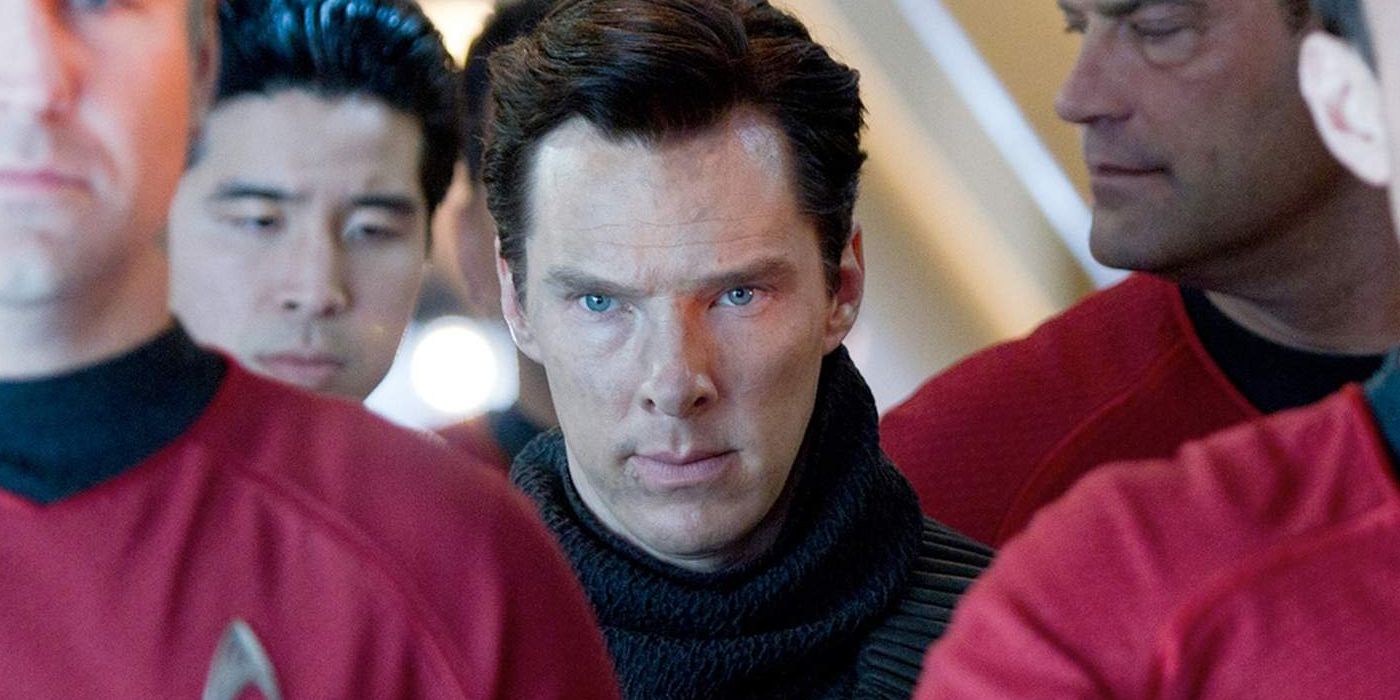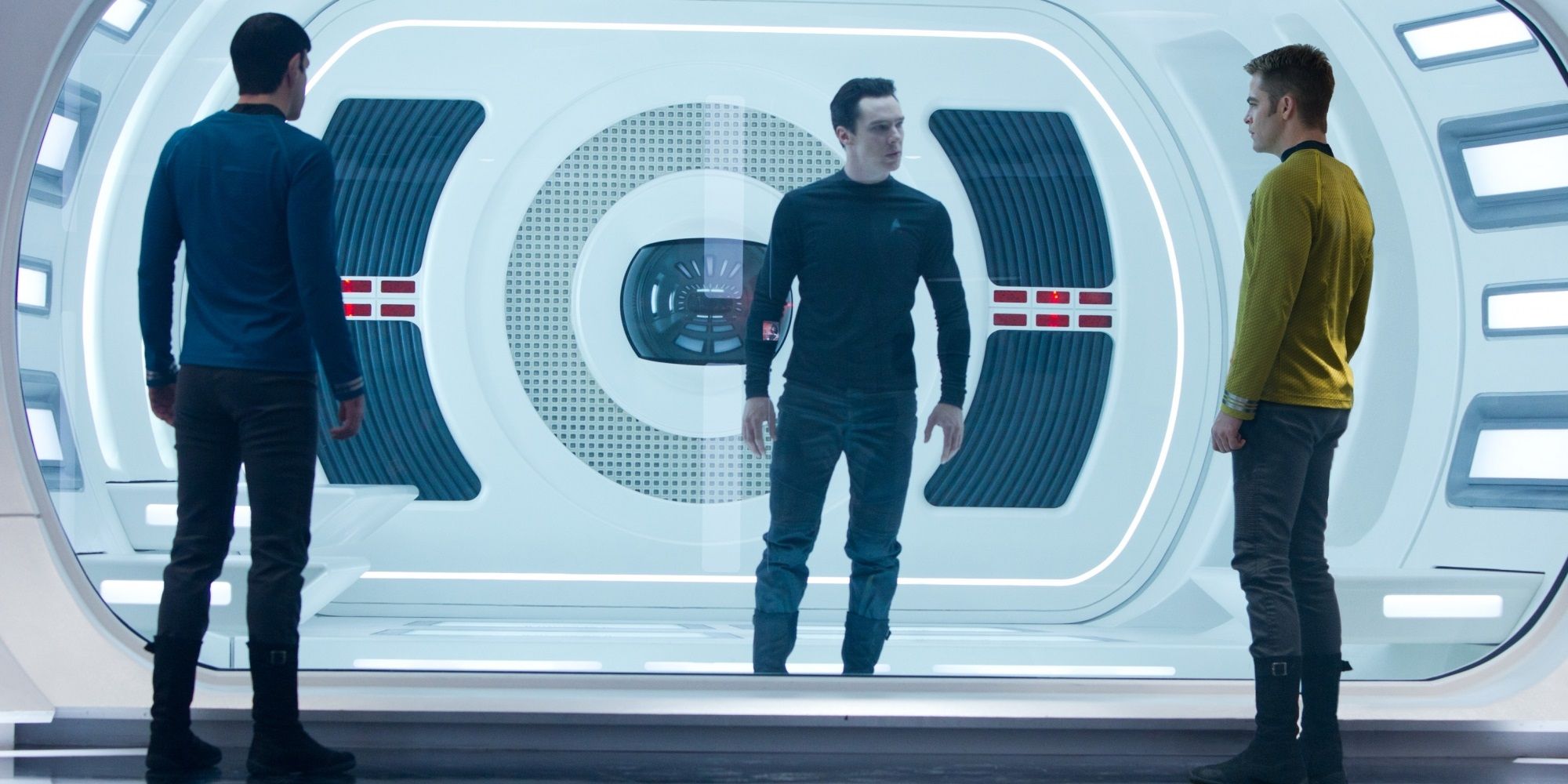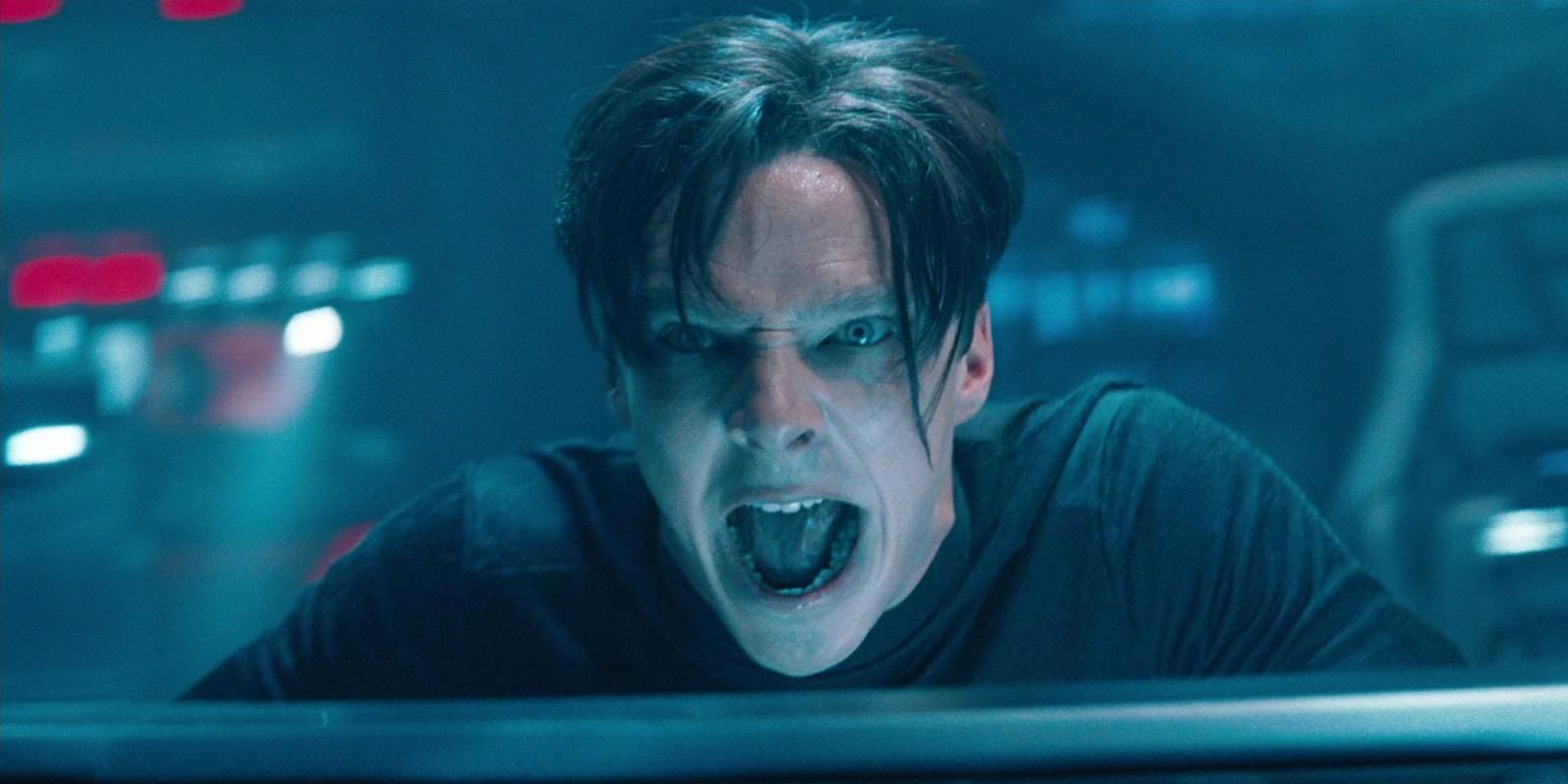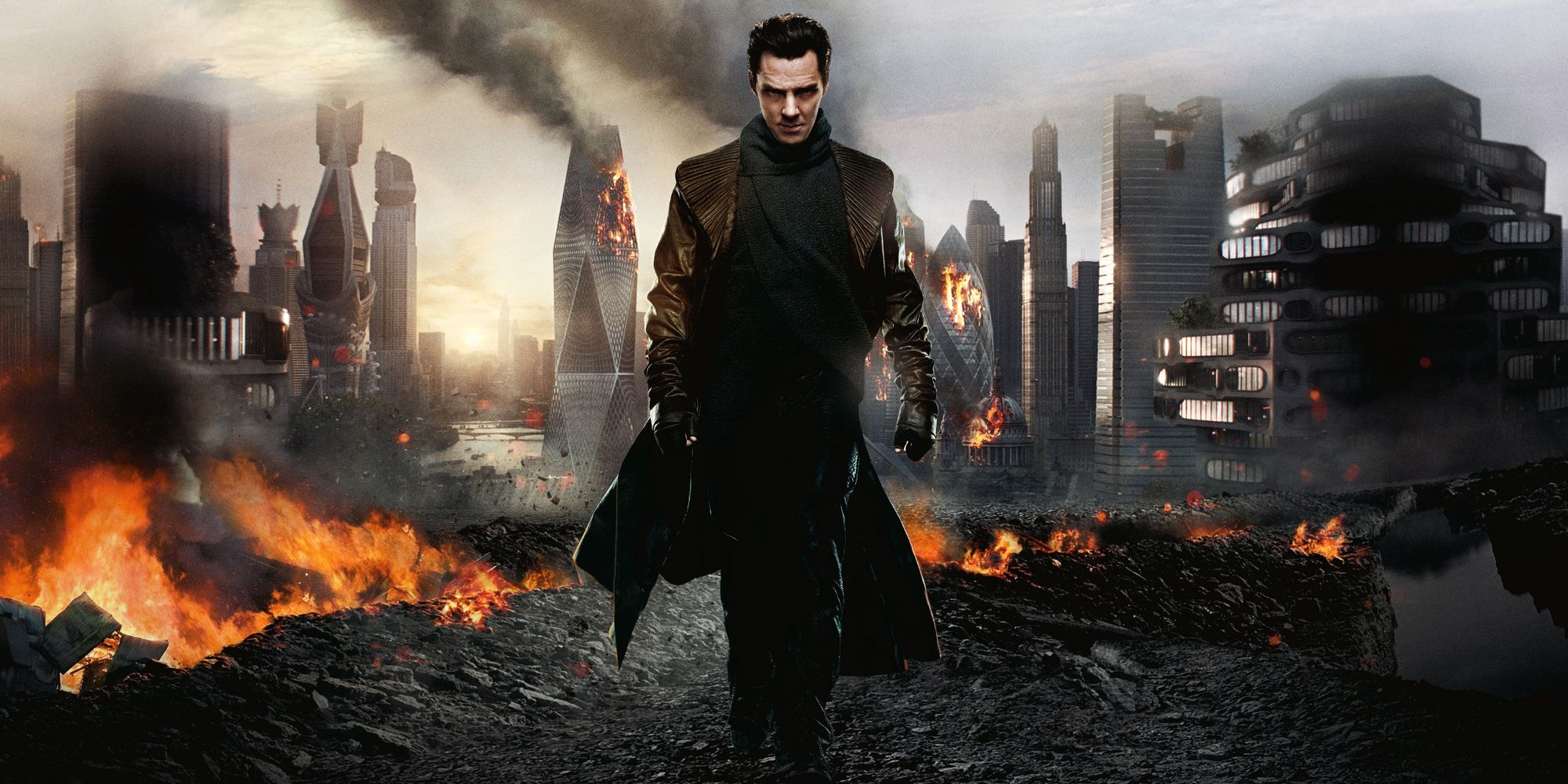An interesting theory suggests that Benedict Cumberbatch’s character in Star Trek Into Darkness was actually an imposter, and there’s a compelling argument to support it. J.J. Abrams rebooted the Star Trek franchise’s Original Series in 2009 with Star Trek, creating an alternate timeline of events. This allowed for more narrative freedom from the established canon of the Star Trek franchise, although the three existing films of Abrams‘ Kelvin Timeline have still managed to capture the spirit of adventure that made The Original Series so popular.
The second entry for Star Trek‘s Kelvin Timeline was Star Trek Into Darkness, which saw not only the return of Chris Pine’s Captain Kirk and the rest of the Enterprise’s crew but the introduction of new characters to the timeline. One such fresh face was Benedict Cumberbatch’s John Harrison, a villain who seemed intent on destroying Starfleet. However, a second-act twist revealed that Harrison was none other than Khan Noonien Singh, Kirk’s nemesis first introduced in The Original Series’ season 1 episode “Space Seed.”
Although the twist was not received warmly by the Star Trek faithful, one theory posted to Reddit suggests that it may have been a far smarter narrative than it seemed. The theory posits that Cumberbatch’s character was never the real Khan, and there’s good evidence within Star Trek Into Darkness and the other Kelvin Timeline movies to support this idea. As a result, while the Khan twist was controversial for Star Trek Into Darkness in 2013, this theory paints it instead as a clever deception of Khan and his followers, making it secretly perfect for the updated Kelvin Timeline.
Why Abrams’ Khan Twist Was So Unpopular

Star Trek Into Darkness‘ Khan twist was hugely unpopular upon release in 2013. The reasons include the casting of a white actor to play the role of a character who is canonically from South Asia, as well as the way Abrams’ movie blatantly recycled an established plot thread from The Original Series and Star Trek II: The Wrath of Khan. However, while it seemingly made use of a fan-favorite villain, Star Trek Into Darkness simply didn’t do justice to Khan’s character or original story outside of the Kelvin Timeline, leading to Star Trek Into Darkness‘ Khan being widely unpopular as a villain (especially in comparison to his TOS counterpart).
Benedict Cumberbatch’s Villain Is Identified As John Harrison

Perhaps the biggest piece of evidence offered by the film itself to support the Reddit imposter theory is the characterization of Khan in Star Trek Into Darkness. First introduced as a rogue Starfleet agent named John Harrison, Benedict Cumberbatch’s character is only later revealed to have been woken from cryosleep as part of Admiral Marcus’ covert plan to ignite a war with the Klingons. As Cumberbatch’s character is woken from cryosleep after centuries of lying dormant, the implication is that his claim to Khan’s identity is unverified, and although the identity of John Harrison is said to have been fabricated, there’s no genuine indication that Cumberbatch’s character is actually Khan beyond the scope of Star Trek Into Darkness.
The Impostor Wants To Protect The Real Khan

The imposter theory also believes that the Khan of Star Trek‘s Abrams movie timeline is an imposter, suggesting a logical reason for the misdirection. The theory posits that Benedict Cumberbatch’s character is actually one of Khan’s subordinates and that he only claims to be Khan to protect his leader. This would make sense given the nature of the character of the Khan previously depicted in The Original Series, as he’s a careful, highly prescient tactician.
In this way, the imposter theory believes that Khan instructed his followers before entering cryosleep that whoever woke first should identify as the leader. This would assist the survival of the real Khan, but it also follows in a logical sense. After all, out of 73 cryotubes, Cumberbatch’s character says only one was opened. The chances that Admiral Marcus would coincidentally open the cryotube holding none other than Star Trek‘s iconic villain, Khan, are slim to none, meaning that the theory actually becomes more plausible than the story presented by Star Trek Into Darkness.
Star Trek Into Darkness’ Fake Khan Theory Explains Its Canon Changes

In addition to making logical sense within Star Trek Into Darkness‘ own story, the imposter theory would also explain away other issues with Abrams’ movie. Firstly, leading up to the film’s release, Benedict Cumberbatch insisted that he was not playing Khan. While the film seemingly revealed this as a marketing fake-out, it could be that Cumberbatch was telling the truth all along, and his character was never the real Khan.
However, one of the most compelling arguments for the theory actually stems from a combination of behind-the-scenes information and the nature of J.J. Abrams’ Star Trek retcon. As Star Trek‘s Kelvin Timeline was separated from the Prime Universe during the opening scene of Star Trek, there are clearly defined boundaries to Abrams’ retcon. The casting of a white actor in the role of Khan – which Mexican actor Ricardo Montalbán previously played – makes no sense as a result. As the character of Khan was supposedly frozen centuries before, his appearance should theoretically be the same. The casting of an actor who looks nothing like Monatalbán may have initially seemed insensitive, but the imposter theory would actually explain it away by using the logic of the established Star Trek canon.
In this way, Admiral Marcus waking Cumberbatch’s character as a result of the destruction of Vulcan in Star Trek is explained by the continuity shift of the Kelvin Timeline, but events leading up to Khan’s cryosleep are not. This means that changes to the specific characterization of Khan form glaring plot holes, which is something that only the fake Khan theory can account for.
What The Fake Khan Theory Means For Star Trek 4

As Star Trek 4 is slated for a late 2023 release date and will continue the story of the Kelvin Timeline, it’s possible that the fake Khan theory will be either proven or disproven within the franchise. Star Trek Into Darkness’ ending saw Cumberbatch’s character placed back into cryosleep, meaning that the actor could well return, although his Khan being so unpopular would make that particular narrative route unadvisable. If Abrams instead opted to explore the fake Khan theory, Star Trek 4 could bring the Kelvin Timeline a more faithful adaptation of the character and explain away one of its most criticized twists to date.
Though the imposter Khan theory is surprisingly plausible, it’s unlikely to be proven true. Given how unpopular the Star Trek Into Darkness twist was, it’s unlikely that subsequent films will revisit it, and the franchise will likely leave the reboot’s version of Khan Noonien Singh alone in the future. However, the theory itself remains logically sound and genuinely compelling, pointing out exactly where Star Trek Into Darkness went wrong in its handling of the iconic Khan.




